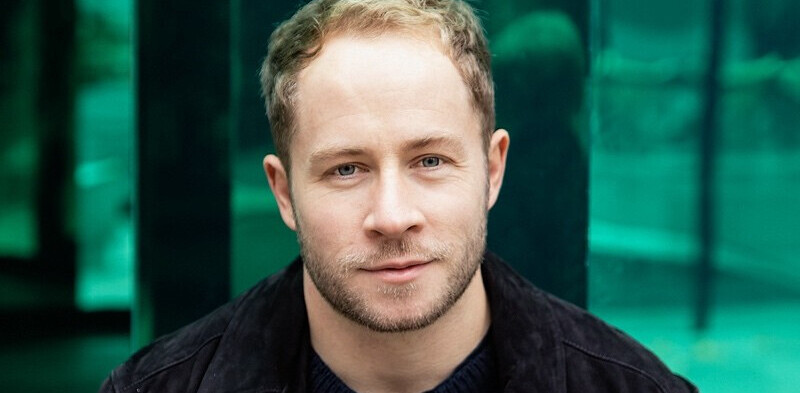
McKinsey estimates that by 2030, 70 percent of companies “might have adopted at least one of the five categories of AI like computer vision, natural language, virtual assistants, robotic process automation and advanced machine learning.”
The report estimates that AI has the potential to deliver “additional global economic activity; of nearly $13 trillion by 2030 and add 16 percent to the higher cumulative GDP compared with [September 2018].”
In geographical terms, Asia occupies 29.4 percent of the Earth’s land surface, but it also has a population of nearly 4.5 billion as of 2015 – 60 percent of the world’s total. Young Asians have an optimistic view of AI as a whole. A Microsoft survey found that 39 percent of young Asians foresee a future with connected or driverless cars, 36 percent fathom a world where there will be software robots that improve productivity and 19 percent imagine robots as social companions.
The youth in the continent are looking forward to AI increasing their productivity, facilitating the way they connect with others and improving their physical and mental health. Job loss due to automation, which is a paramount concern in many parts of the world, seems to have taken a back seat in Asia, with only 26 percent worried about losing their jobs to technology.
Each of the countries in Asia is at a different level of technological development. The progress of AI also naturally differs by country and region. McKinsey states that, while the United States is considered to be the leader in the global AI sphere, China is the runner up. This can be reinforced by looking at how many people are employed in the AI field worldwide. According to the Nikkei Asian Review , the Canadian AI startup Element estimates that there are 22,400 top talents in AI worldwide – 10,295 of them are in the United States while 2,525 are in China.
“There are 22,400 top talents in AI worldwide – 10,295 of them are in the United States while 2,525 are in China”
Element also found that Japan was an outlier to the AI talent scene with only 805 top talents working in the country, which is the world’s third-largest economy. Japan will have a huge deficit of AI talent in the future if it doesn’t fill the void quickly enough. On the other hand, Singapore is relatively stocked with AI talent, with 40 percent returning to the country after obtaining the requisite skills abroad. Chinese, South Korean and Indian talents are also heading back to their countries of origin after studying in other countries.
What is Shaping AI in Asia?
In order to understand how AI is taking shape in Asia, particularly Southeast Asia and East Asia, Binary District spoke with IBM Japan and Muthu Kumar Chandrasekaran, an AI expert specializing in machine learning and natural language processing.
We began by asking each about the challenges and opportunities that exist in the AI field in Japan and Singapore respectively. The IBM spokesperson expressed concern around labor shortages and low labor productivity in the country, as well as Japan’s declining population.
According to IBM, this represents a big challenge for the AI sector, as “many enterprises cannot start using AI due to lack of strategies and leaders, lack of skills and human resources, and many enterprises do not proceed to actual operation because PoC does not produce the expected results. There are many companies that have been put into operation but are not using small-scale and narrow areas, and have not advanced their digital transformation.”
Chandrasekaran, on the other hand, is optimistic about the Far East as it has always been a ‘great playground for applications when new technologies hit the market.” “Unlike in the West,” he says, “the Far East does not have anti-trust tendencies towards technology companies using user data for machine learning. This has resulted in the Far East becoming the first to get technologies such as facial recognition in the real world and fully realizing the power of online social networks for recommendation systems.
“The Far East has a larger local technical labor force than in the West. This is driving western companies to open their largest development centers there. This indicates the potential for innovation that still remains untapped.
“Unlike in the West, the Far East does not have anti-trust tendencies towards technology companies using user data for machine learning”
“While Singapore has created a great start-up ecosystem in the last few years, other larger Far Eastern economies are yet to fully commit to such an initiative. Chinese companies are still focused on the local markets and haven’t adapted their brands to compete with western companies globally. The governments in India and Japan can do more in terms of policies and investment to encourage AI-based start-ups.”
Like other emerging technologies, AI has been in danger of getting swallowed up in its own hype. It is possible, though, to gauge the state of emerging technology by looking closely at various new developments associated with it.
When it comes to Japan, for example, Natural Language Processing (NLP) is gaining momentum. IBM states that instead of developing an AI model from scratch, it is necessary to use learned AI such as NLP and Image Recognition provided by a vendor that can fit the enterprise’s business needs.
IBM Japan, for example, launched Watson, which supports the Japanese language in 2016. “In the case of IBM Watson, many APIs can be customized by learning enterprise-specific data, and these can be combined to develop AI applications that meet your needs,” the company tells us.
“AI applications are already being developed and used in various industries and operations. For example, AI applications for customer services that respond to proposals for appropriate products and confirmation and change of order information, and AI applications that support professionals such as operators and engineers are being developed and put into production, and are used to cover the labor shortage and to provide higher service quality.”
There are exciting developments happening elsewhere in Asia as well. Chandrasekaran points to the use of facial recognition technology in real-world applications in China as well as the rise of self-driving car companies in both China and Singapore. He also notes the large volume of accepted papers from the Far East in top academic AI conferences as an indicator of an AI boom in the region.
“Data-driven social networking companies that have changed the shopping and payment industry for the better in China are a great example of where the Far East is ahead of the West,” Chandrasekaran says. “Strong will from governments in the region to invest in large nationwide AI programs (e.g. AI Singapore) with civilian participation is very different from western government funding programs through their defense research arms. Civilian participation and enthusiasm are necessary for the adaptation of AI in people’s daily lives.”
Of course, every part of Asia has its own unique culture, which does have an effect on how technology progresses in individual nations. Japan has always been one of the world’s premier manufacturing hubs. Domestically, according to the Ministry of Economy, Trade, and Industry, Japan’s manufacturing industry is responsible for 90 percent of the country’s exports.
“I expect Singapore to have the first self-driving vehicles in use by the public, for example, as government buses or as university shuttles”
It is not surprising, then, that AI would find prominence in the manufacturing sector in the country. “AI is also being used in the manufacturing industry,” IBM tells us. “Many companies have been working on the predictive analysis (predictive maintenance, demand forecasting, etc.) using routine data, but moreover, using atypical data such as text, images, voice, and sound in AI to gain expert knowledge and progress toward digitalization.”
Singapore’s relatively small size and well-organized environment lend itself to other developments. “I expect Singapore to have the first self-driving vehicles in use by the public, for example, as government buses or as university shuttles,” Chandrasekaran says. “These, in my opinion, are easier to deploy than a self-driving taxi fleet.” He also argues that, since the country has significant strength in enhanced education programs, it has the opportunity to increase public participation in academic matters.
“Public universities here have opened the door for its people to come to participate in community-driven initiatives to learn and practice AI, for example, a course from NUS,” he says. “Hardly any western government has a cohesive nationwide effort to help their public learn and acquire new skills that this AI-driven world needs. Just like e-governance Singapore will emerge as a leader in deploying technology-enhanced education at scale to train its general public in AI.“
This article was originally published on Binary District by Charlie Sammonds. Binary District is an international сollaborative technology community that creates unique competency-based workshops and events on new technologies. Follow them on Twitter.
Get the TNW newsletter
Get the most important tech news in your inbox each week.




